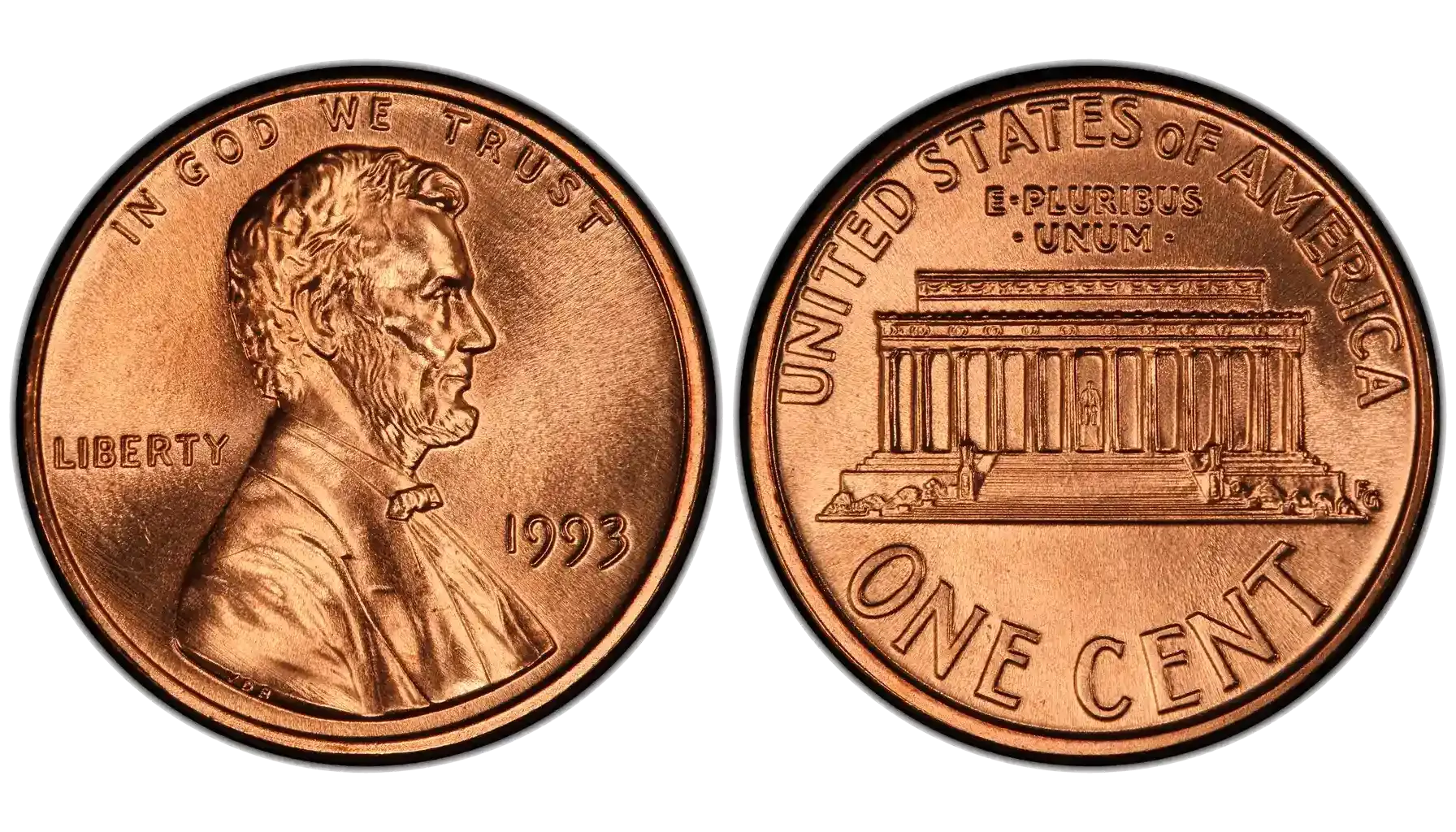Contents:
- History of the 1948 Roosevelt Dime
- 1948 Dime Value Today – Circulated to Mint State
- Mint Mark Breakdown – P, D & S Varieties
- Silver Content and Melt Value of the 1948 Dime
- 1948 Dime Error List and Rare Varieties
- Proof and High-Grade 1948 Dimes
- Collector Demand for the 1948 Dime Series
- Final Thoughts: Should You Keep or Sell a 1948 Dime?
The 1948 Roosevelt dime introduced the new portrait of President Franklin D. Roosevelt, replacing the Mercury design. The U.S. Mint struck coins at Philadelphia, Denver, and San Francisco. Collectors prize the 1948 issue for its place in numismatic history and for early mint-state survivors.
This guide shows how to identify rare proofs, spot high-grade examples, and understand market trends. You will learn key factors that drive premiums and where to look for standout pieces. Use this information to check coin value before buying or selling.
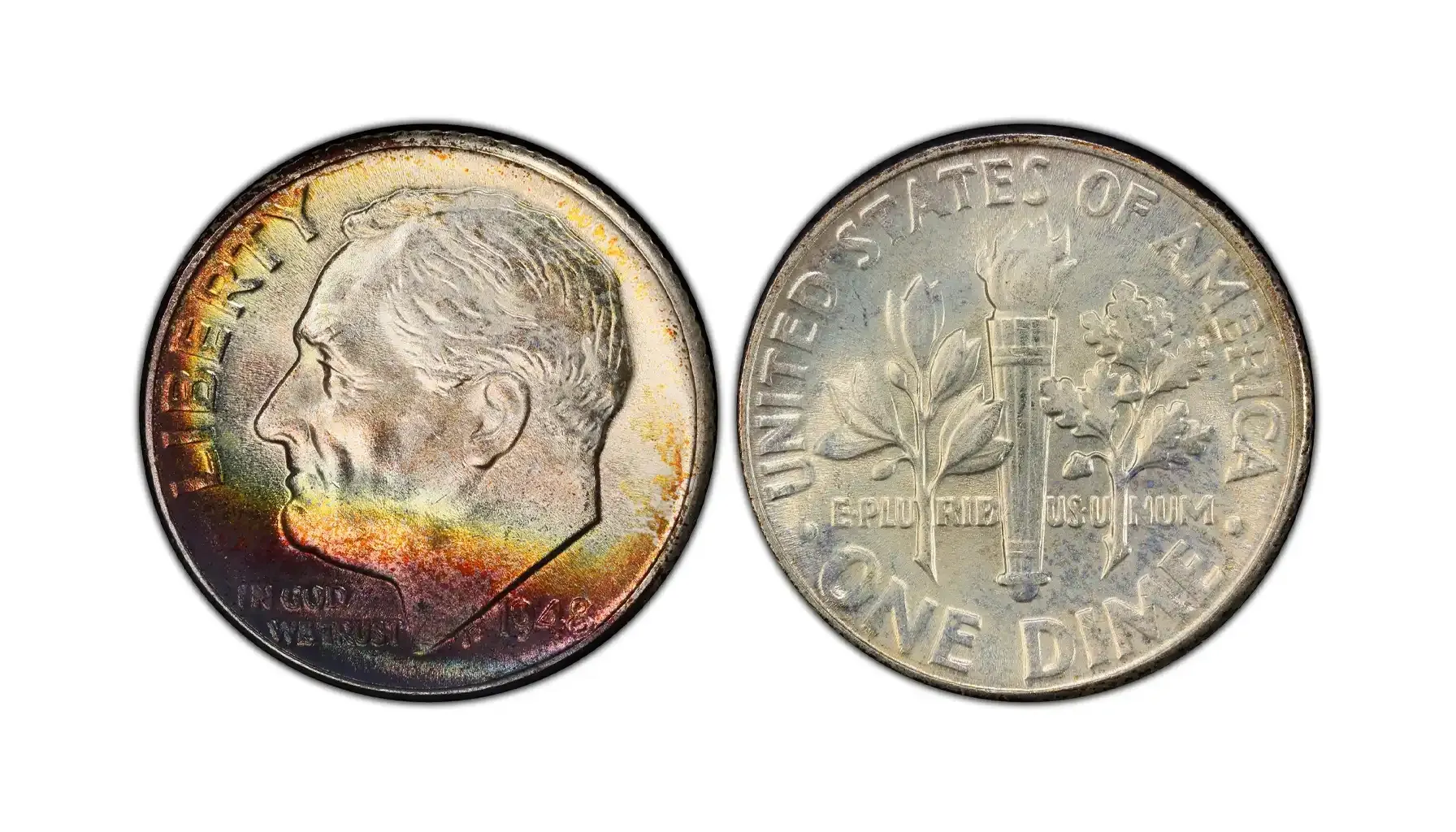
History of the 1948 Roosevelt Dime
The U.S. Mint introduced the Roosevelt dime in 1946 to honor President Franklin D. Roosevelt’s legacy and his fight against polio. By 1948, the series continued with the same artistic motif. Collectors study the 1948 Roosevelt dime value to compare early strikes from Philadelphia, Denver, and San Francisco. Many look for well-preserved examples with full mint luster.
Before the Roosevelt design, the Mercury dime featured Lady Liberty wearing a winged cap. That change reflected a shift in national sentiment after World War II. Dealers often track the 1948 Liberty dime value when evaluating the transition from Mercury to Roosevelt. Early mint-state survivors often trade at premiums due to their historical significance.
Collectors often ask how much is a 1948 Roosevelt dime worth when they find one in their change or estate collections. Circulated examples typically trade near silver melt value, while uncirculated specimens can command several dollars. Rare proof and high-grade business strikes may bring strong bids at auction.
Key events leading to Roosevelt’s appearance on the dime
President Roosevelt’s death in 1945 prompted immediate design proposals.
Sculptor John R. Sinnock’s portrait won approval for its likeness and simplicity.
The Mint phased out the Mercury design to reflect modern leadership and social change.
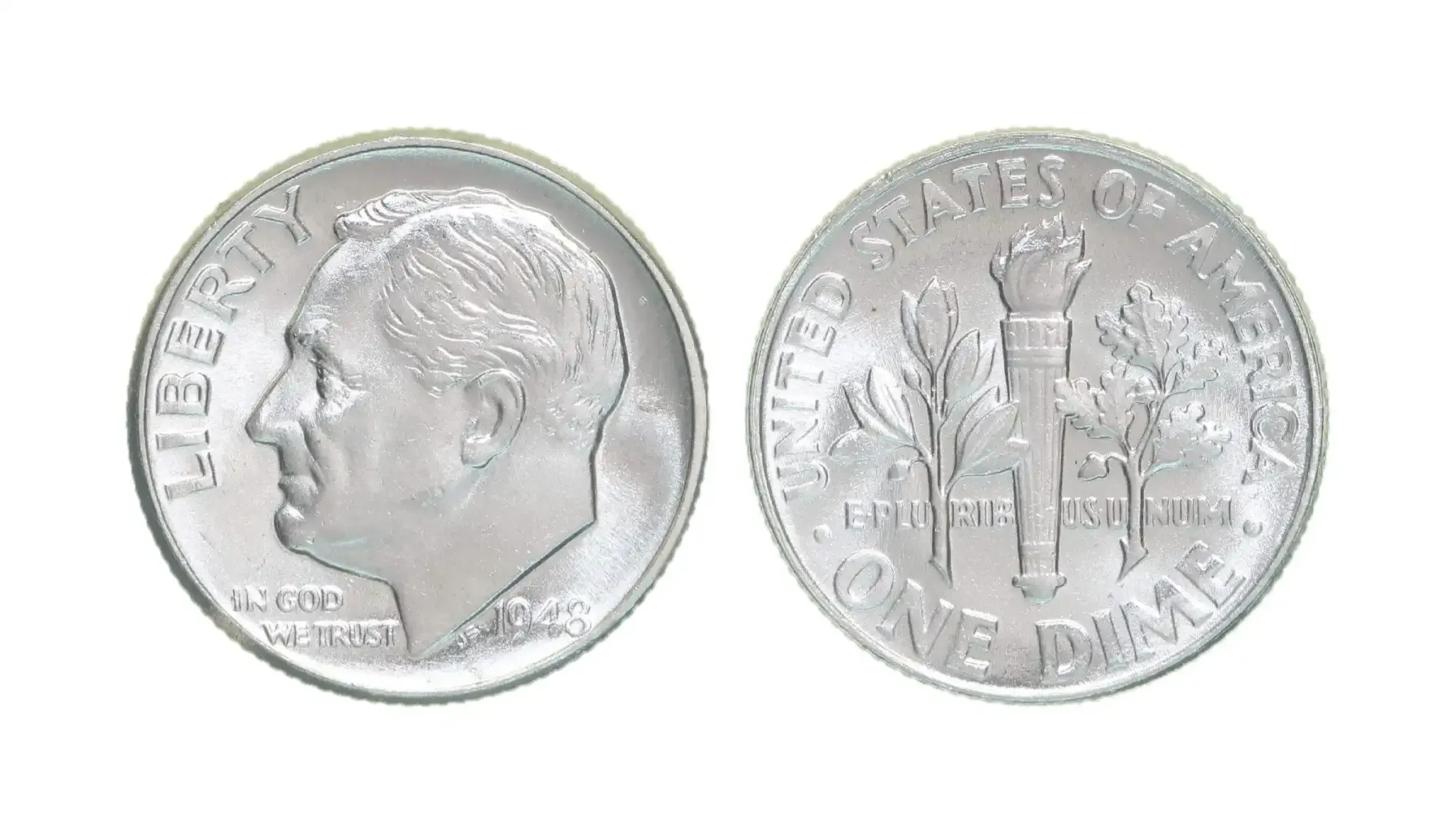
1948 Dime Value Today – Circulated to Mint State
Most collectors start by asking how much is a 1948 dime worth in circulated grades. In Good (G) condition, coins often trade around $2–$3. Very Fine (VF) pieces can reach $4–$6. These ranges reflect both silver melt value and collector demand for early Roosevelt dimes.
When you want to know the 1948 dime value today in uncirculated grades, price jumps become more pronounced. An MS60 coin may fetch $10–$12. As you move to MS63, prices climb to $15–$20. Top-tier MS65 and above examples can reach $30–$50 or more, depending on eye appeal.
Collectors also track the 1948 dime coin value by mint mark. Philadelphia strikes carry no mint mark, so many ask about 1948 dime no mint mark worth. A no-mark MS63 often sells for $12–$15, while Denver and San Francisco issues can bring slightly higher premiums. Proof S-mint coins often exceed business strikes, especially in high grades.
Value breakdown (G to MS67+) for P, D, and S mints:
Grade | Philadelphia (P) | Denver (D) | San Francisco (S) |
G | $2 – $3 | $2 – $3 | $3 – $4 |
VF | $4 – $6 | $4 – $6 | $5 – $7 |
AU | $8 – $10 | $8 – $10 | $10 – $12 |
MS60 | $10 – $12 | $12 – $15 | $15 – $18 |
MS63 | $15 – $20 | $20 – $25 | $25 – $30 |
MS65 | $30 – $35 | $35 – $40 | $40 – $50 |
MS67+ | $60 – $75 | $70 – $90 | $80 – $100+ |
Grading terms used by collectors
Good (G): Heavy wear with basic design visible
Very Fine (VF): Moderate wear with sharp design features
About Uncirculated (AU): Light wear on high points, full luster
Mint State (MS): No wear, full mint luster, graded from MS60 to MS70
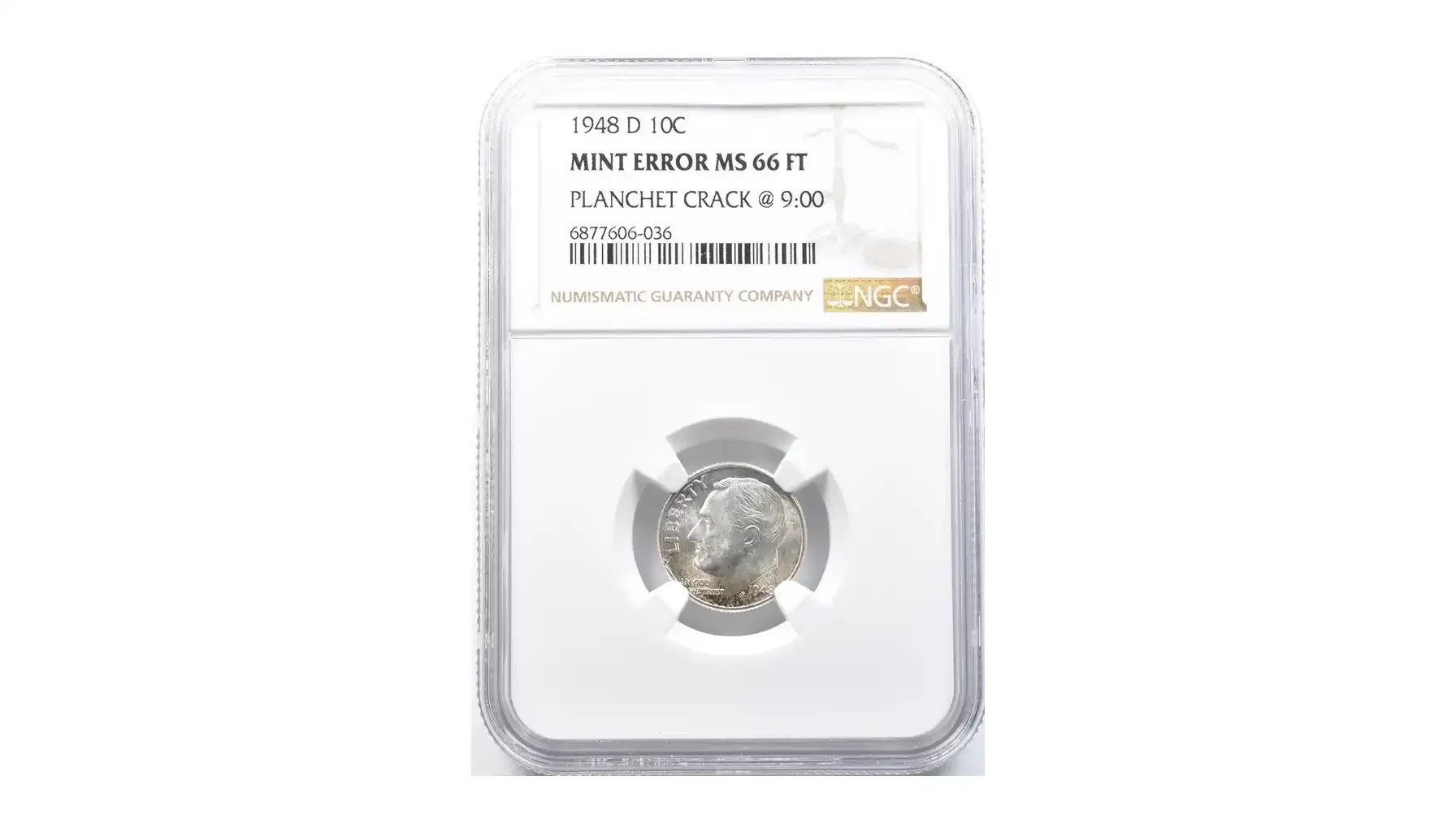
Mint Mark Breakdown – P, D & S Varieties
Collectors start by spotting the mint mark on the reverse of a 1948 dime. It sits just to the right of the torch, nestled between the oak and laurel branches. Philadelphia strikes carry no mint mark. Tracking the 1948 dime no mint mark value helps you gauge common business strikes. Even uncirculated Philadelphia coins often trade near $10.
Denver struck its dimes with a small “D” next to the torch. Production at Denver in 1948 reached roughly 51 million coins. That large mintage keeps the 1948 D dime value modest in lower grades. Collectors seeking errors can consult a 1948 D dime error list for varieties like doubled dies and die cracks. These mistakes can push value above standard pricing.
San Francisco placed an “S” in the same spot on each reverse. That mint produced about 15 million dimes in 1948. The 1948 S dime value often exceeds other mints, especially in uncirculated grades. When you check recent auction prices, the 1948 S dime value today in MS63 can reach $15–$20. Proof ten-cent coins from San Francisco command even higher premiums.
For a deeper dive into pricing by grade and mint, check the no mint mark worth guide—it summarizes the 1947 Roosevelt dime’s values across P, D, and S issues, highlights how condition drives jumps from a few dollars to strong premiums in MS grades, and shows why collectors focus on mint-mark scarcity when gauging current market worth.
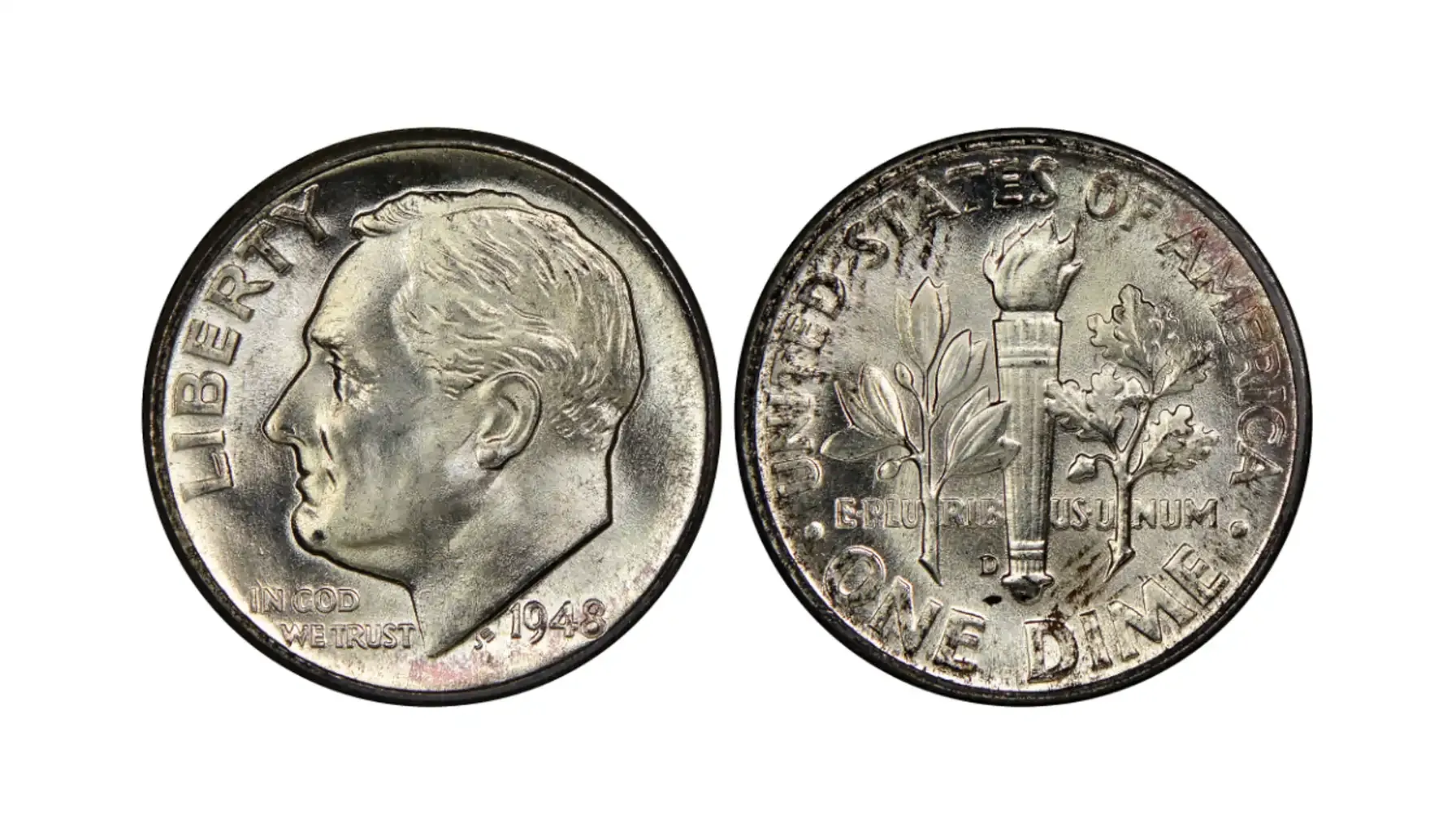
Mintage and value comparisons by mint
Philadelphia (No Mint Mark): Mintage ~112 million; common in circulated grades; uncirculated value typically $10–$15
Denver (D): Mintage ~51 million; modest premiums in MS60–MS63 ($12–$18); rare errors can fetch $25+
San Francisco (S): Mintage ~15 million; higher premiums in MS63–MS65 ($15–$30); proof dimes often start at $20
Silver Content and Melt Value of the 1948 Dime
The 1948 dime carries a 90% silver composition and weighs 2.5 grams. That gives it about 0.0723 troy ounces of silver. When you know the 1948 dime silver content value, you can calculate its base metal worth. Each coin’s value starts with the melt value of its silver.
To figure the 1948 dime silver value, multiply the silver weight by the current spot price. For example, at $25.00 per ounce, the melt value equals $1.81. Many dealers list how much is a 1948 silver dime worth using this method. In today’s market, most circulated dimes trade near that silver baseline.
Collectors watch premiums above melt as well. The 1948 silver dime value today often exceeds metal price when coins remain uncirculated or show strong eye appeal. High-grade examples carry collector premiums on top of melt. Understanding both metal and numismatic factors helps you gauge a fair offer for each coin.

Silver Spot Price (USD/oz) | Silver Content (oz) | Melt Value (USD) |
$25.00 | 0.0723 | $1.81 |
$30.00 | 0.0723 | $2.17 |
$35.00 | 0.0723 | $2.53 |
$40.00 | 0.0723 | $2.89 |
1948 Dime Error List and Rare Varieties
Collectors track the 1948 dime error list with mint mark location to find misstruck pieces. Many errors appear near the mint mark on the reverse. These mistakes include doubled dies and repunched mint marks. Each error type can spike a coin’s 1948 dime error value.
Some errors push the 1948 dime worth with error well above standard pricing. Off-center strikes show part of the design missing along the rim. Die cracks create raised lines that run through Liberty’s portrait. Clipped planchets make one side of the coin look cut short. Strike-throughs leave foreign material embedded in the field.
Collectors also compare these errors to regular Roosevelt dimes. They note that the 1948 Mercury dime value remains a baseline for standard strikes. Error coins often trade for two to three times that figure, depending on severity. For a full gallery of Roosevelt dime mistakes, see the Roosevelt Dime Error Gallery.
5 notable errors (die cracks, off-center, repunched mint mark)
Die Cracks: Raised hairline lines from fractured dies
Off-Center Strike:

Repunched Mint Mark:

Clipped Planchet:
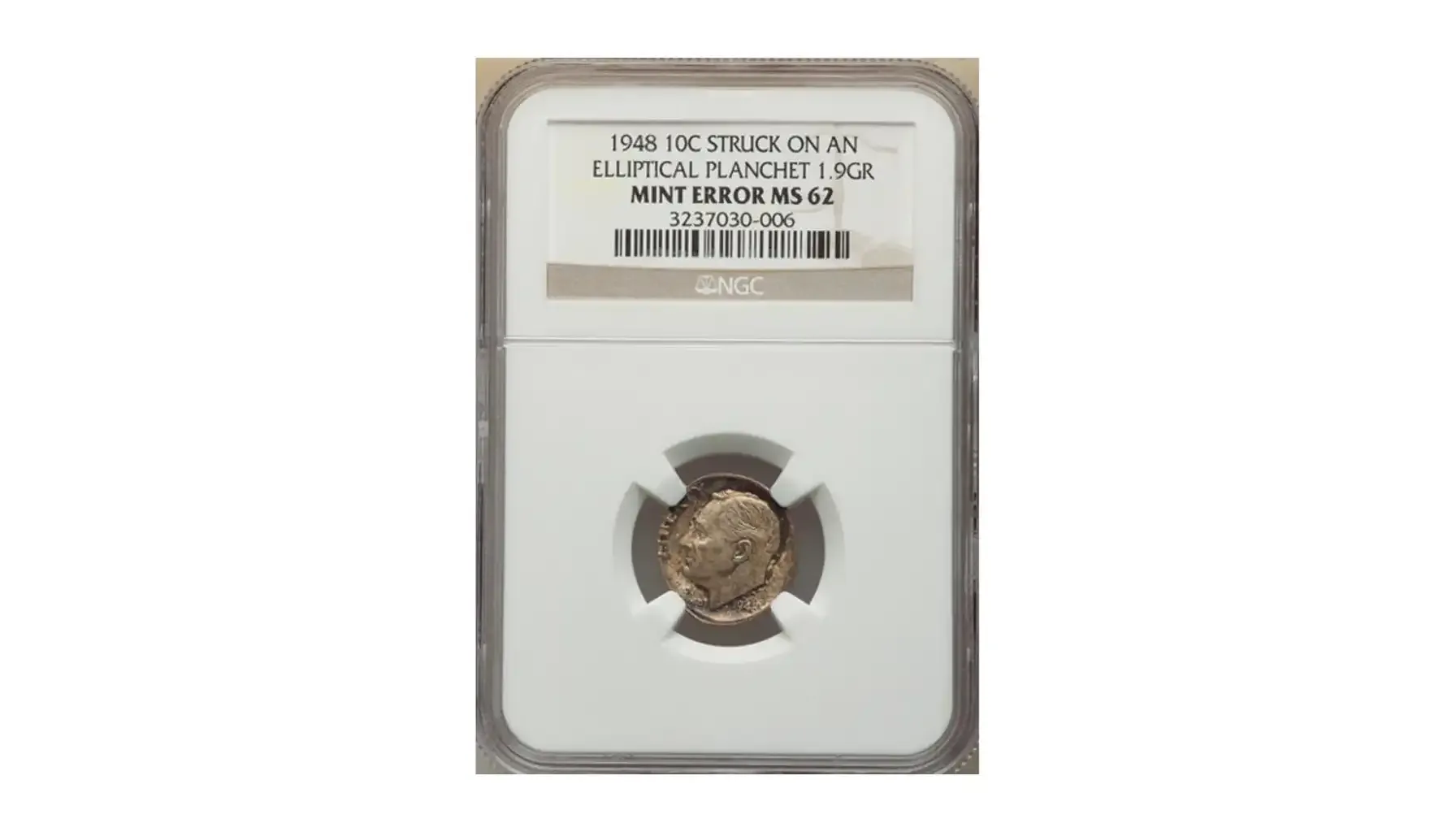
Strike-Through:
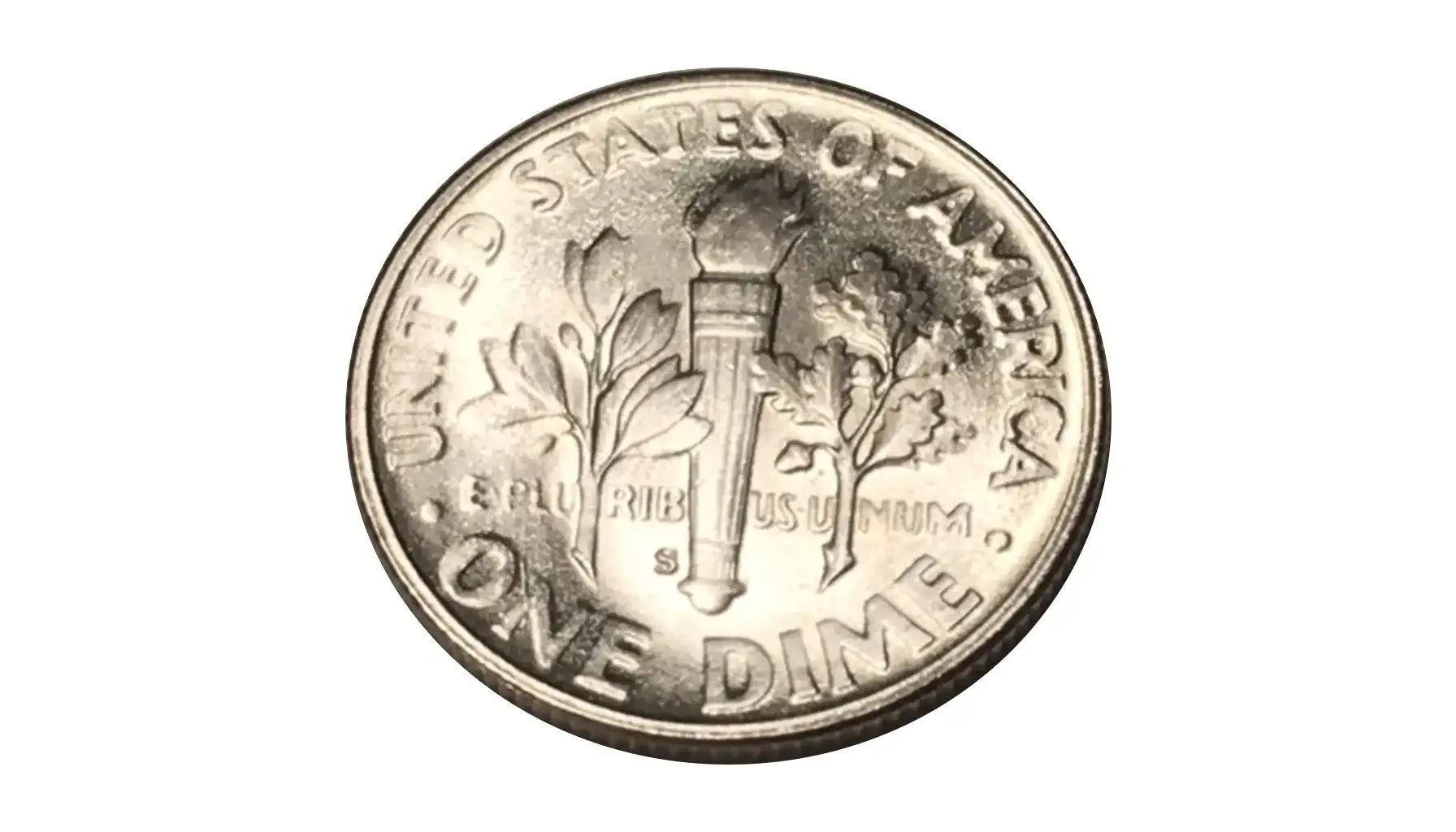
Proof and High-Grade 1948 Dimes
Proof and high-grade 1948 dimes stand out in the Roosevelt series. Collectors often ask value of 1948 dime when they see an MS66 or higher coin. Premiums rise sharply at MS67+ because few examples survive in top condition. Even modest circulation wear can drop a coin’s appeal, leading to questions like is a 1948 dime worth anything if it shows any noticeable marks.
Denver proof and business strikes peak the market for this issue. The 1948 D dime value at MS67 can reach $150 or more when certified by PCGS or NGC. Dealers often list how much is a 1948 D dime worth at auctions to guide potential sellers. Only a handful of Denver ten-cent coins achieve MS68 or full band torch details, making them highly sought.
Collectors check key markers before investing in high-grade pieces. They look for sharp torch flames and clear denticles. Every detail from the mint luster to strike depth impacts pricing. Coins with flawless fields and well-defined devices command the highest bids.
Signs of full torch details and other high-grade markers
Sharp Torch Flames: Each flame appears distinct with no metal flow or softness
Clear Denticles: Rim denticles fully separate from the design with crisp edges
Full Mint Luster: Original mint sheen covers both fields uniformly without haze
Strong Strike: Devices like Roosevelt’s profile and torch show deep relief and fine hairlines
No Surface Marks: Look for minimal bag marks, contact spots, or abrasions on high points

Collector Demand for the 1948 Dime Series
Collectors often ask what is a 1948 dime worth when they seek coins that mark the first full year of the Roosevelt design. Demand stems from both historical interest and silver content. Many view 1948 ten-cent coins as dime 1948 value benchmarks because they bridge post–World War II coinage and early Cold War-era collecting.
Even basic circulated pieces can find buyers among those building date sets. Premiums rise for uncirculated strikes, with collectors tracking 1948 US dime value guides to spot standout examples. Sightseers and hobbyists alike target these coins for their place in Roosevelt’s early series, earning them a reputation as one of the most collected Roosevelt coins.
If you want to dive deeper into collecting strategies and grading standards, see the 1946 Roosevelt Dime Value Guide. That resource offers detailed insights into early Roosevelt dimes and factors that drive collector demand.
Final Thoughts: Should You Keep or Sell a 1948 Dime?
Collectors often compare the 1948 Liberty dime worth with mint mark when deciding whether to keep or sell. High-grade, marked examples usually draw stronger bids, especially at auctions where rarity drives demand. Some investors even compare these values to headline-making sales, like the 1984 dime worth $2 million, to gauge how standout coins can skyrocket in price. Holding marked coins may pay off if market trends favor first-year designs and rare mint errors.
On the other hand, a 1948 no mint mark dime still holds appeal for many collectors. Philadelphia strikes reach base silver value in circulated grades, but uncirculated survivors can command premiums that justify preservation. Selling a no-mark dime might make sense if you need quick liquidity or if the coin’s condition falls short of auction quality. Always weigh current prices against long-term collecting goals.
For reliable appraisal and selling options, research reputable services and platforms. To explore top venues and tips for listing your coin, see the Sell a Coin Collection guide. That resource outlines trusted auction houses and appraisal services to help you make informed decisions.

